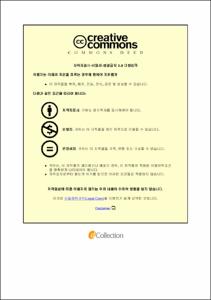Ulsan Univ. Repository
Thesis
General Graduate School
Mechanical & Automotive Engineering
1. Theses (Master)
Fusion of UWB and IMU for Human Translation and Motion Capture using REBA Analysis
- Abstract
- A study integrating UWB and IMU technologies for real-time ergonomic analysis and motion capture in manufacturing to enhance efficiency and safety ZHENG XI Department of Mechanical and Automotive Engineering The Graduate School University of Ulsan As the manufacturing industry continues to evolve, high-precision, real-time positioning and motion capture are becoming increasingly important. Ultra- Wideband(UWB) and Inertial Measurement Unit(IMU) technologies have revolutionized modern factories, providing unprecedented advantages. In a manufacturing industry where automation and robotization are becoming increasingly popular, precise positioning and motion capture have become core[1]. UWB positioning technology has always garnered attention due to its high positioning accuracy, but it is prone to interference from issues such as non-line-of- sight errors and multipath effects. On the other hand, IMU positioning technology, which does not require external inputs and is less susceptible to external disturbances, also faces its own challenges. These include the accumulation of errors over time and the difficulty in effectively eliminating false gait detection. This study utilizes a UWB positioning system and an IMU motion capture system to record workers' positional movements and limb motions in real-time, facilitating real-time ergonomic analysis of their actions. UWB provides precise positioning capabilities, while IMU technology offers tools for real-time motion capture. The use of an UWB positioning system replaces traditional positioning techniques in motion capture systems. UWB technology enables high-precision, low- latency indoor positioning with accuracy up to the centimeter level [2]. Compared to systems based on IMU, UWB has clear advantages. IMU systems, due to their cumulative errors, may lead to inaccuracies in positioning after extended use [3]. However, UWB positioning systems, because they do not rely on integral measurements but instead estimate distances directly through signal propagation delay, can significantly reduce the problem of cumulative errors [4]. This research employs IMU sensors for motion capture and recording of workers’ actions during their tasks and utilizes the Rapid Entire Body Assessment(REBA) method for ergonomic assessment to minimize injury risks and enhance workers’ efficiency. By analyzing and contrasting the joint movements of experienced workers with those of newcomers, it theoretically assists workers in improving their postures and promptly detecting errors in the workflow, thereby increasing efficiency and decreasing the likelihood of potential injuries. The UWB positioning system ascertains and documents the workers’ motion trajectories. When integrated with IMU motion capture, it facilitates a faster mastery of work processes and methods for new workers, reduces the time required for pre-employment training, elevates factory production efficiency, and the data recorded also provides valuable insights for the analysis and optimization of production processes.
- Issued Date
- 2024
- Awarded Date
- 2024-02
- Type
- Dissertation
- Alternative Author(s)
- ZHENG XI
- Affiliation
- 울산대학교
- Department
- 일반대학원 기계자동차공학과
- Advisor
- 이장명
- Degree
- Master
- Publisher
- 울산대학교 일반대학원 기계자동차공학과
- Language
- eng
- Rights
- 울산대학교 논문은 저작권에 의해 보호받습니다.
- Appears in Collections:
- Mechanical & Automotive Engineering > 1. Theses (Master)
- 파일 목록
-
-
Download
 200000728479.pdf
기타 데이터 / 4.94 MB / Adobe PDF
200000728479.pdf
기타 데이터 / 4.94 MB / Adobe PDF
-
Items in Repository are protected by copyright, with all rights reserved, unless otherwise indicated.